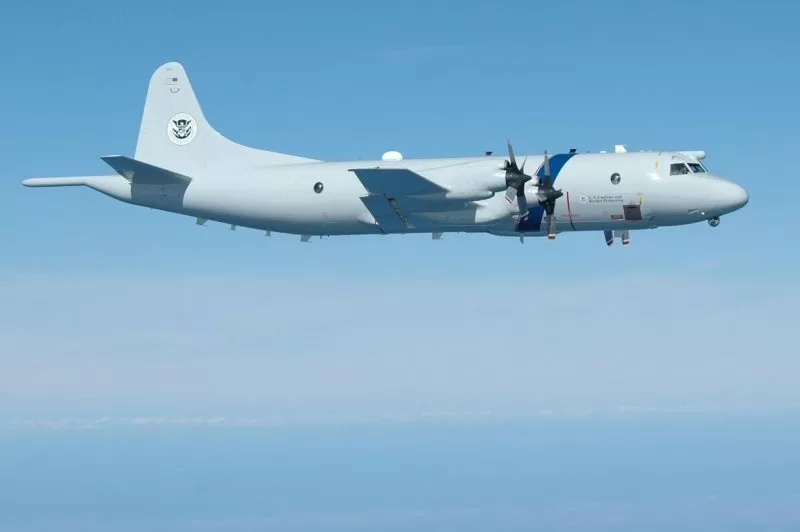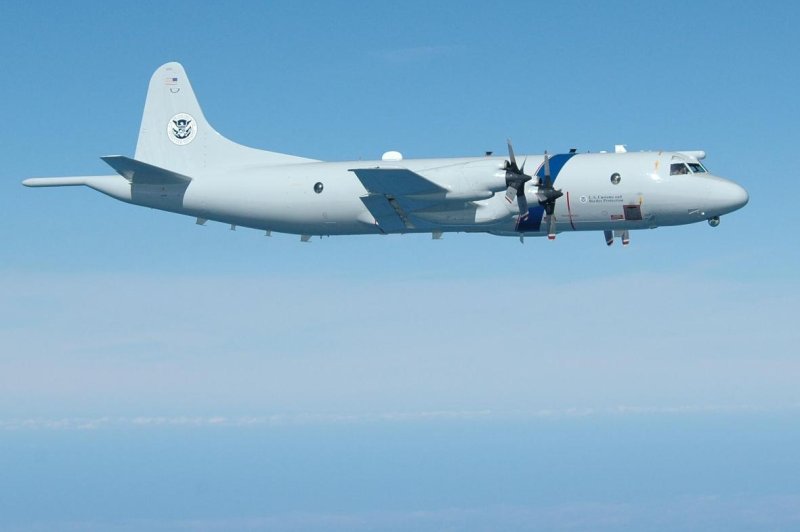The U.S. Customs and Border Protection is implementing a new aerial resupply operation, of which the Lockheed P-3 Orion Long Range Tracker is integral. Photo courtesy of Customs and Border Patrol
Feb. 28 (UPI) — A new system for resupplying Coast Guard vessels while at sea is cutting costs and improving national security, border-protection officials said Wednesday.
The U.S. Customs and Border Protection and the Air and Marine Operations groups worked with several federal partners to implement new aerial resupply operations at sea, the CBP announced Wednesday.
The new airborne deployable delivery system enables Coast Guard vessels and other ships to stay on patrol instead of returning to port to resupply. The system enables the vessels to spend about 75 more days on patrol instead of returning to port to resupply, according to the CBP.
“Through detailed logistical planning … we can keep operational assets on station for longer periods of time,” Coast Guard Rear Admiral Mark Fedor, director of Joint Interagency Task Force-South, said.
“That means more drugs off the streets and rapid dismantlement of smuggling networks,” Fedor said.
Each time the new aerial supply system is used, it saves taxpayers about $1.3 million, CBP officials said. The new system has saved taxpayers about $16 million since March 2022.
“Aerial delivery via [an] airborne deployable delivery system is highly flexible, swift and effective,” said T. J. Emerick, executive director of CBP national air security operations.
The propeller-driven, four-engine Lockheed P-3 Orion Long Range Tracker is an integral part of the new aerial resupply operations that drop supplies via parachutes. Those supplies then are retrieved from the water by waiting vessels.
“The P-3’s responsive airlift capabilities enable deployment of time-sensitive, mission-critical supplies to our partners,” Emerick said.
The CBP and AMO teams have conducted 16 such aerial resupply operations at sea since March 2022.
More on the P-3 Orion
According to the CBT:
- The P-3 LRT can stay aloft for up to 12 hours.
- It has a range of 4,600 miles.
- The turbo-prop aircraft is designed for all weather.
- It has a maximum speed of 466 mph and a service ceiling of 28,000 feet.
- It has a maximum gross weight of 135,000 pounds.
- It has a crew of eight.

